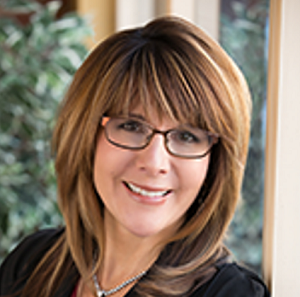Top-Level Takeaways
- Price volatility and environment concerns are pushing consumers to adopt clean energy.
- BIPOC and low-income borrowers are a prime target audience for affordable clean energy loans.
- Federal resources are available to backstop lending and fund new initiatives.
Every day is Earth Day when you’re trying to help save the planet, and with energy costs skyrocketing across the United States, environmental concerns are dovetailing with economic imperatives.
Perhaps no credit union is more vested in the idea of sustainability than Clean Energy Federal Credit Union ($53.6M, Englewood, CO), a virtual shop that made its first loan in 2018 and now has approximately 8,700 members scattered across nearly every state and U.S. territory.
“Everything we do is going to follow our mission to increase the adoption of clean energy,” says CEO Terri Mickelsen. “We really work to stay in that lane.”
The credit union offers home improvement, vehicle, solar, and geothermal loans and helps borrowers shoulder the cost burden with its Clean Energy for All Loan program, which offers a 50-basis point discount on all its loan types.
Clean Energy for All focuses on increasing access to affordable clean energy loans for Black, Indigenous, and people of color (BIPOC) as well as low-income borrowers. The idea is to level the playing field for those two groups, which typically are hit hardest by high energy costs yet are least able to afford niceties like solar panels and new windows. According to a report from the American Council for an Energy-Efficient Economy, approximately 40% of low-income households spend more than 10% of their income on energy costs; Black and Native American households spend about 45% more than white, non-Hispanic households.

Bill Bynum, president and CEO of Hope Credit Union ($579.2M, Jackson, MS), is well aware of that burden among his nearly 40,000 members living in and around the Mississippi Delta.
“You have to make these loans affordable when you’re talking about people with very limited means, very low net worth, very thin safety nets,” he says. “They’re already making difficult choices navigating inflation and high interest rates and deciding whether to buy food or medicine. That makes it difficult for them to prioritize investments in energy efficiency.”
Hope currently makes electric vehicle (EV) and home improvement loans to homeowners, businesses, churches, and other non-profits. It also is evaluating solar lending, which will open the credit union to a specialty other shops are finding to be popular and profitable.
Solar Power, Partnerships, And Profits
Tucson Old Pueblo Federal Credit Union ($210.1M, Tucson, AZ) has closed more than 2,700 solar loans for more than $85 million, making it the most popular loan in the cooperative’s green-lending portfolio, says Joanna Jackson, who recently became consumer lending manager after five years as sustainable lending manager.
The line of business is highly partner-dependent, and lenders must rigorously vet installers to weed out bad actors, Jackson says. Solar products and services are in high demand, yet financing from even dependable organizations often depends on Wall Street and other private equity, with high interest rates and vendor fees being passed on to customers.
“It’s not uncommon for big finance companies to charge up to 30% of the loan amount just to finance the loan,” Jackson says.

That presents a major opportunity for credit unions. In New England, competitors of UMassFive College Federal Credit Union ($700.8M, Hadley, MA) add 20% to 40%, which helped the credit union attract the business of nearly 1,300 residential solar installations worth $51 million in 2023.
What’s more, solar loans are now becoming a vehicle for loan capitalization.
“We’ve been borrowing and buying brokered CDs to fund our lending but plan to sell a portion of our residential solar loans later this year,” says Rich Kump, president and CEO of UMassFive College FCU. “These are great assets and very desirable.”
According to Kump, most of the credit union’s solar loans are on 10-year terms that historically pay down ahead of time, helped along by borrowers who tend to drop their 30% Renewable Energy Tax Credit onto the principal balance.
Robin Romano, the longtime CEO of MariSol Federal Credit Union ($50.2M, Phoenix, AZ), says she has not seen a solar loan fail in her 25 years at the cooperative.
UMassFive College FCU offers six types of sustainability loans. Learn more in its one-page flyer. Or, check out this flyer to learn more about its solar power lending.
EV Loans Motor Along
Although it’s a new genre, EV lending doesn’t require the specialization of solar-lending programs. The collateral, after all, is just a motor vehicle with a different kind of motor.
“We’ve toyed with a discount for EVs, but our regular auto and truck rates are very competitive, and the member can reduce their rate by up to a half-percent by cashing in some of their Co-op points,” says Kump at UMassFive College FCU. “So we finance EVs but don’t offer anything special.”
That said, it’s a popular niche for some green-focused lenders.
Clean Energy, for example, currently has five different loans for new and used EVs. The programs range from four to six years in length with 110% loan-to-value and a minimum of $3,000 to a maximum of $90,000 for each of them, with rates at this writing ranging from 6.39% to 6.99%. The credit union also offers a program for Tesla financing.
Moreso than financing, access to charging stations is what stands in the way of deeper adoption in many areas.
“As we become an EV nation, it’s a travesty to see that people in the Delta and other rural communities have to drive gas guzzlers while people in more affluent communities have more access to climate-friendly vehicles,” says Bynum at Hope.
He says his shop is looking at installing charging stations around its 23-branch network and can see stations becoming part of Hope’s affordable housing work.
Mickelsen at Clean Energy says most homes in his area don’t typically come with EV chargers in place; however, he expects that to change, “unless and until they come up with a solar car.”
Rising electric vehicle usage has led some institutions to install electric vehicle charging stations at branches. The move could help both the planet and the bottom line. Learn more in “Low Battery? These Credit Unions Can Help.”
Investment And Regulation
Green lending is highly influenced by government policy on the local, state, and national level. Tax incentives come and go, shrink and grow, and so does direct government investment. Perhaps the biggest of all so far is the Greenhouse Gas Reduction Fund (GGRF). It’s a $27 billion investment the EPA is making as part of the Inflation Reduction Act and aims to mobilize financing and private capital for projects in communities across the country.
Inclusiv is getting $1.87 billion of that through the GGRF’s Clean Communities Investment Accelerator, funds it will use to provide grants for capitalization, staffing, training, software, and more.

“We’re at a pre-inflection point where everyone is figuring out how to leverage these dollars,” says Bynum, whose credit union is part of the Inclusiv network. “But lenders like Hope who lead with mission and financial inclusion and opportunity are ready to operate as the proof of concept for more traditional lenders. Together, we can pour these dollars into low-income communities, those places most vulnerable to the effects of climate change.”
State and local programs are now in place that can help lenders buy down interest rates, boost loan reserves, and more. But it’s not just about lending directly. Regulators also play a huge role.
UMassFive College FCU recently won a $650,000 grant from the Clean Energy Center at the Massachusetts Department of Energy Resources to test a pilot designed to decarbonize commercial buildings throughout the commonwealth.
And California is now requiring solar power systems in all new single-family homes, condominiums, and apartment buildings less than three stories high. California and 10 other states, meanwhile, have established targets for utilities to install a specific amount of battery storage to, among other goals, make sure their grids can handle the additional electricity created by residential and commercial solar systems.
Whether that will help convince utilities to remove barriers to residential and community solar growth — such as net metering policies, interconnection and grid access, demand charges, and fixed fees — remains to be seen, but these could be signs of change to come.
Seasons Change: Change Is Gonna Come
Like other loan products, green lending programs also experience their own kind of seasonality.

“We see our largest amount of loan apps in the summer when people start getting those $400 to $600 electric bills,” says Jackson at Tucson Old Pueblo.
However, falling prices and the spread of essential infrastructure to support solar and other sustainable energy sources are poised to push up demand for green lending year-round. Mickelsen at Green Energy says she expects to see costs for solar equipment, for example, to continue falling as they have in the recent past for such things as big-screen TVs.
“As the climate continues to change and as people become more aware of that reality, the need to upgrade your home with the latest and greatest, most energy-efficient products will change, too,” she says.
The need for green lending is out there, and it will continue growing for the foreseeable future.